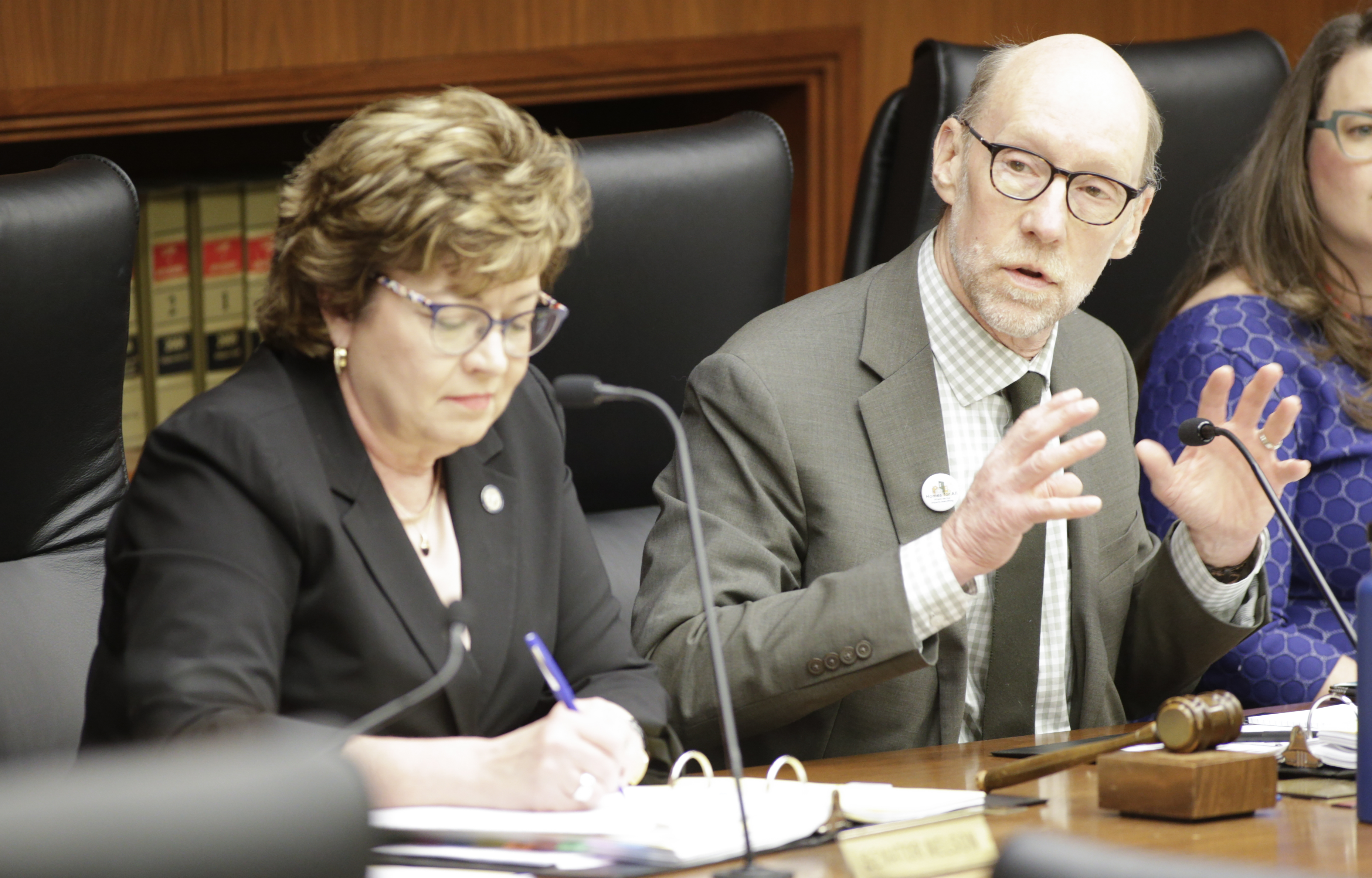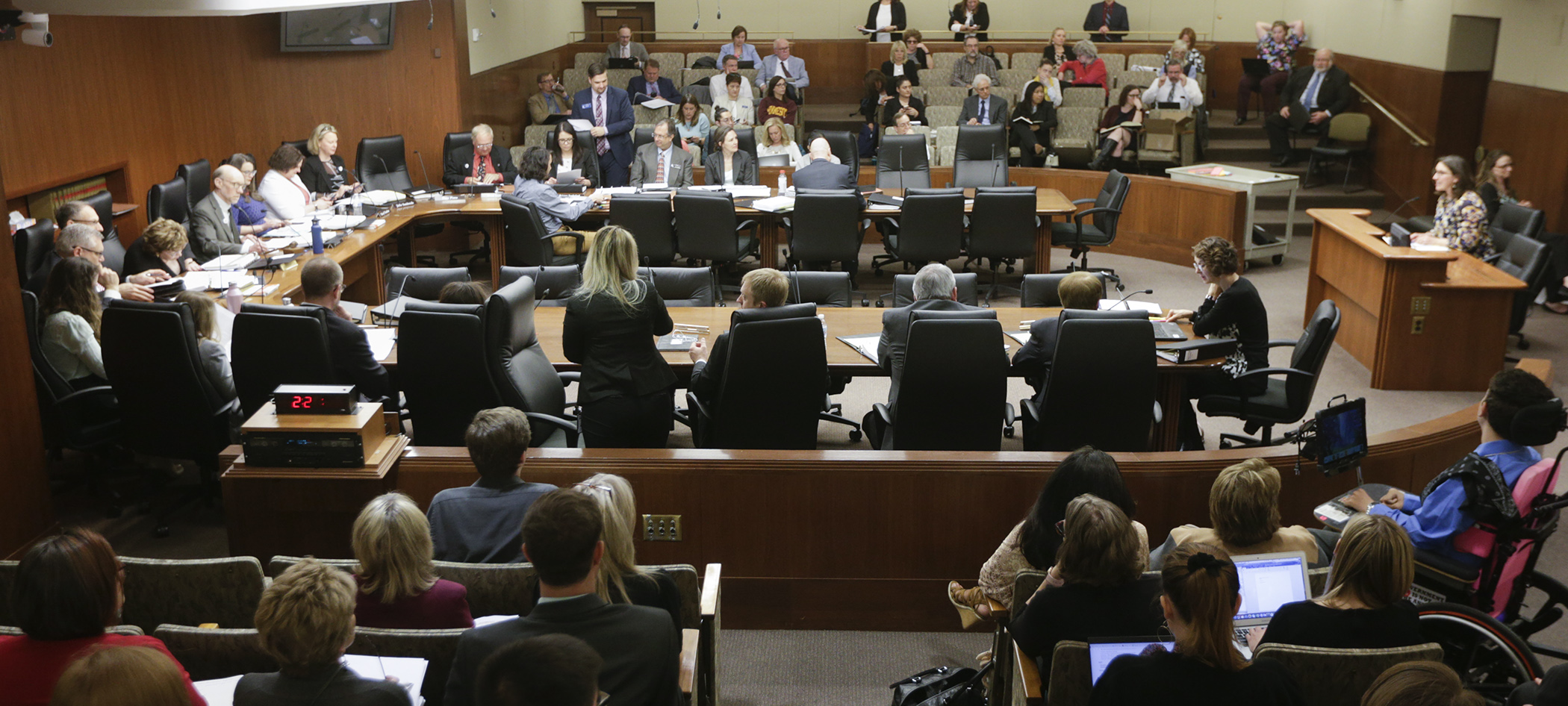An amicable start to E-12 education finance conference committee discussions

As House and Senate leaders and Gov. Tim Walz worked to establish joint budget targets Monday, the conference committee on the omnibus education finance bill held its first meeting to review the vastly different House and Senate proposals of HF2400.
Despite the significant differences and complex negotiations that lie ahead, co-chairs and bill sponsors, Rep. Jim Davnie (DFL-Mpls) and Sen. Carla Nelson (R-Rochester), said they share a common goal of creating an E-12 education package that will help address the growing workforce shortage and close the persistent achievement gap.
“I think at the end of the day our visions are the same,” Nelson said. “Our vision is that all of our children would be well prepared for the jobs of tomorrow and I believe that we can do that, and I look forward to working with the House and Rep. Davnie to make that vision become a reality.”
Davnie echoed that, saying, “It is nice to hear the commonality and goals, let’s hope we can build on that.”
The amicable first meeting included introductions, testimony from Education Commissioner Mary Cathryn Ricker, and a walkthrough of monetary differences between the House and Senate proposals by nonpartisan fiscal staff.
The biggest difference? The bottom line
The most fundamental difference comes down to an overall spending gap of nearly $686 million between the two proposals in the upcoming biennium.
The House bill would add $913.8 million in overall E-12 spending over the February 2019 Minnesota Management and Budget forecast, compared to the Senate’s new investment of $228 million.
 House-Senate conferees on HF2400, the omnibus education finance bill, listen as Education Commissioner Mary Cathryn Ricker testifies at their first meeting May 6. Photo by Paul Battaglia
House-Senate conferees on HF2400, the omnibus education finance bill, listen as Education Commissioner Mary Cathryn Ricker testifies at their first meeting May 6. Photo by Paul BattagliaThe largest expenditure in each proposal would go toward the general education per-pupil funding formula, with the House version providing a 3 percent increase in Fiscal Year 2020 and an additional 2 percent increase in Fiscal Year 2021, for an overall increase of $520.5 million. The Senate’s proposal would provide a 0.5 percent increase in the formula each year of the biennium, for a new investment of $96 million.
Ricker expressed support for the House proposal, which aligns with Walz’s budget recommendation.
“A slight increase of 0.5 percent of the basic formula each year will not help school districts and charter schools keep up with rising costs, and will force them to cut already thin budgets rather than invest in what they see working in their school communities,” she said.
Other key differences exist in the areas of special education, school safety and early childhood education.
Special Education: The second largest investment in the House proposal would provide $118 million for special education funding and reforms in the upcoming biennium. An investment that is absent from the Senate proposal.
Safe Schools Aid: Both proposals include new money for safe schools aid to be used for facility improvements and support staff. However the Senate bill would provide $75 million over the next biennium — its second-largest investment — compared to $24 million in the House proposal.
Early Childhood Education: The House bill would provide $47 million to maintain the existing voluntary prekindergarten and school readiness slots that are set to expire this year, pending no legislative action. It would also appropriate an additional $35 million for early learning scholarships during the 2020-21 biennium.
In contrast, the Senate bill would replace the expiring voluntary prekindergarten slots with $44.5 million in additional early learning scholarship funding, appropriated during Fiscal Year 2020.
Conferees are scheduled to reconvene at 2 p.m. Tuesday to review a side-by-side comparison of the House and Senate versions of the bill.
Related Articles
Search Session Daily
Advanced Search OptionsPriority Dailies
Ways and Means Committee OKs proposed $512 million supplemental budget on party-line vote
By Mike Cook Meeting more needs or fiscal irresponsibility is one way to sum up the differences among the two parties on a supplemental spending package a year after a $72 billion state budg...
Meeting more needs or fiscal irresponsibility is one way to sum up the differences among the two parties on a supplemental spending package a year after a $72 billion state budg...
Minnesota’s projected budget surplus balloons to $3.7 billion, but fiscal pressure still looms
By Rob Hubbard Just as Minnesota has experienced a warmer winter than usual, so has the state’s budget outlook warmed over the past few months.
On Thursday, Minnesota Management and Budget...
Just as Minnesota has experienced a warmer winter than usual, so has the state’s budget outlook warmed over the past few months.
On Thursday, Minnesota Management and Budget...